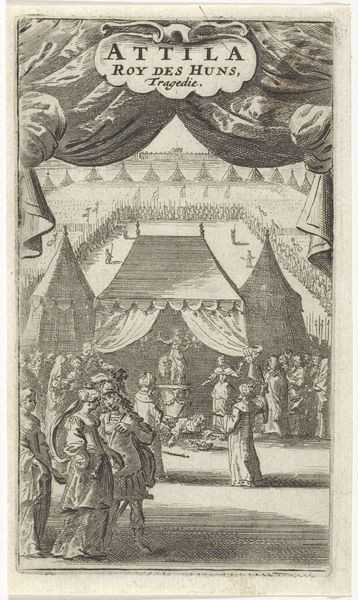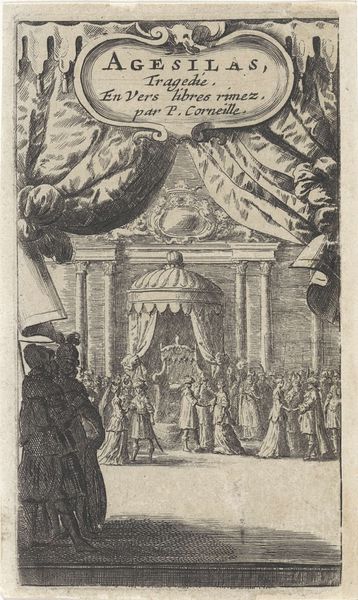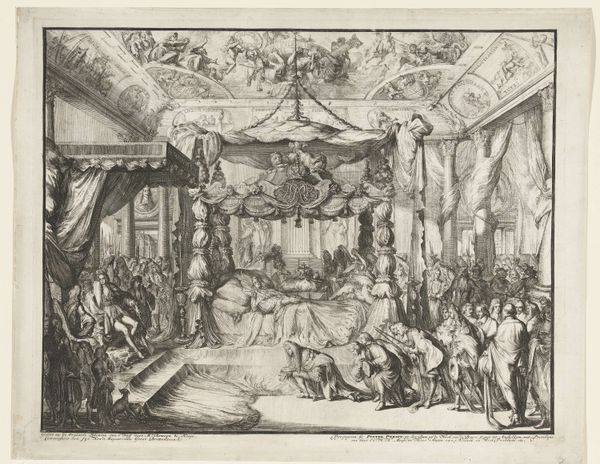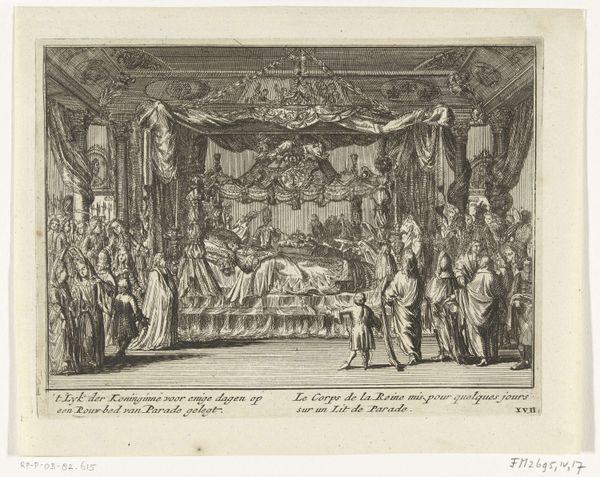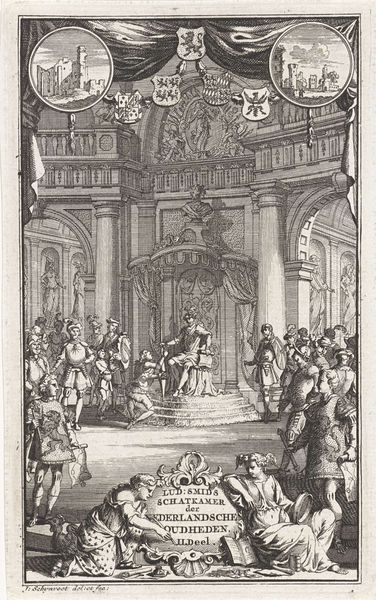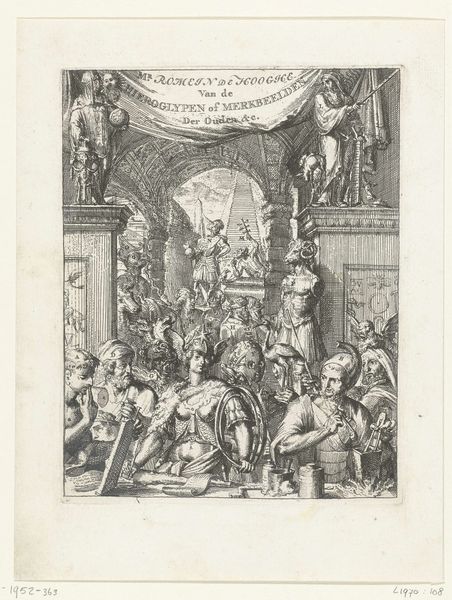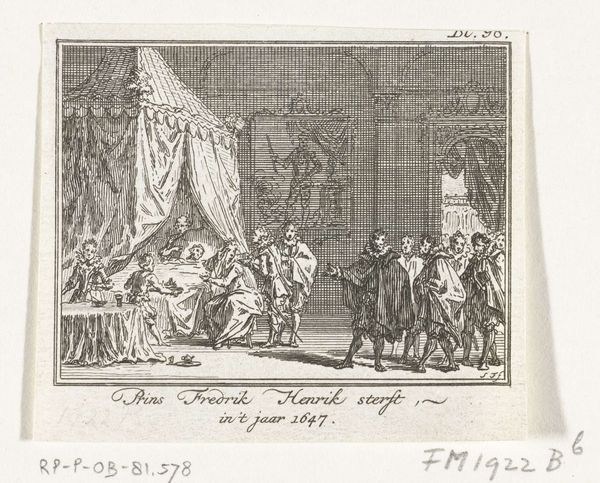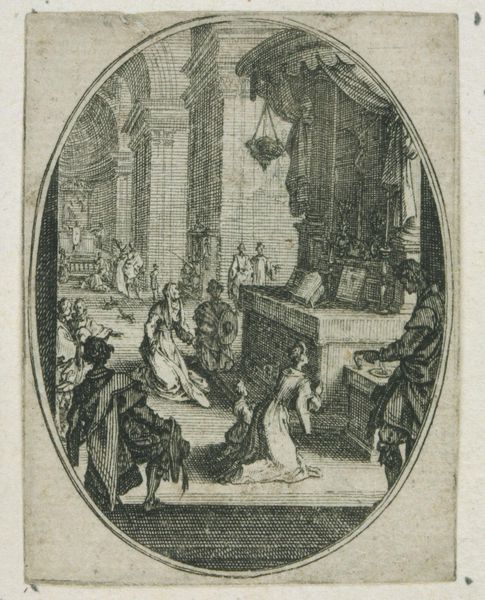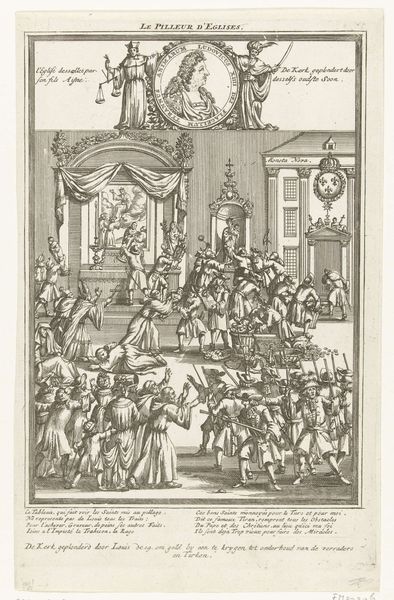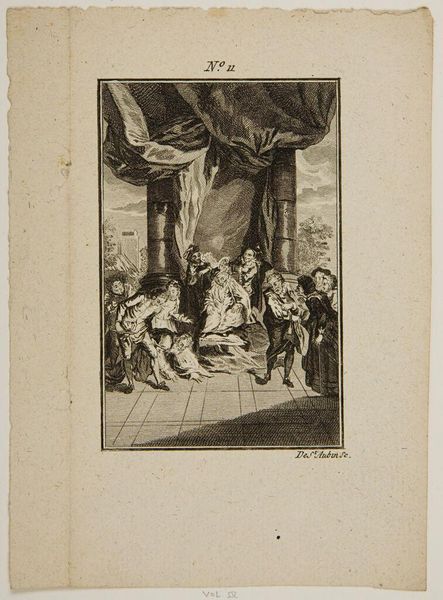
print, engraving
#
narrative-art
#
baroque
# print
#
history-painting
#
engraving
Dimensions: height 116 mm, width 65 mm
Copyright: Rijks Museum: Open Domain
Curator: This engraving, made in 1666 by Abraham Dircksz. Santvoort, is titled "Seleucus kroont Antiochus" and resides here at the Rijksmuseum. What strikes you immediately about this print? Editor: There's a sense of theatricality here, wouldn’t you say? The composition, the way the figures are arranged, and the dramatic drapery all point to a very staged moment, almost frozen in time. Curator: Indeed, that is emphasized by the context around theater production and historical painting prevalent in the Baroque period. These details signal more profound aspects related to identity and power in Santvoort’s time. How might those relate here? Editor: Power is absolutely on display. Note how those gathered seem oriented toward a single, regal figure being crowned on what resembles a stage. Perhaps crowning images bear resemblance to symbols and their evolution? What meanings can they acquire across time and various social strata? Curator: Coronation as ritual certainly weaves through visual history, and these kinds of moments reinforced cultural and political ideals for Baroque audiences. Who gets crowned and by whom is, of course, paramount. This act illustrates inherited privilege, yes, but simultaneously legitimizes patriarchal lines of succession that often denied women’s contributions and authority. Editor: Agreed. The composition reinforces a hierarchy and established structure that were certainly familiar to its original audience, which prompts reflection on the enduring, though evolving, cultural resonance such stagings possess. We interpret these images shaped by history. Curator: Yes, this engraving not only serves as a historical document but also reveals embedded socio-political biases. It offers a snapshot into performative governance in ways that reflect back at us even today. Editor: I appreciate how discussing this piece allows us to consider visual memory. We might ask: what narrative elements remain potent today, and which are fading from collective consciousness? Curator: It leaves us contemplating which stages, literal and figurative, our performances play out on. Editor: Food for thought, indeed.
Comments
No comments
Be the first to comment and join the conversation on the ultimate creative platform.
